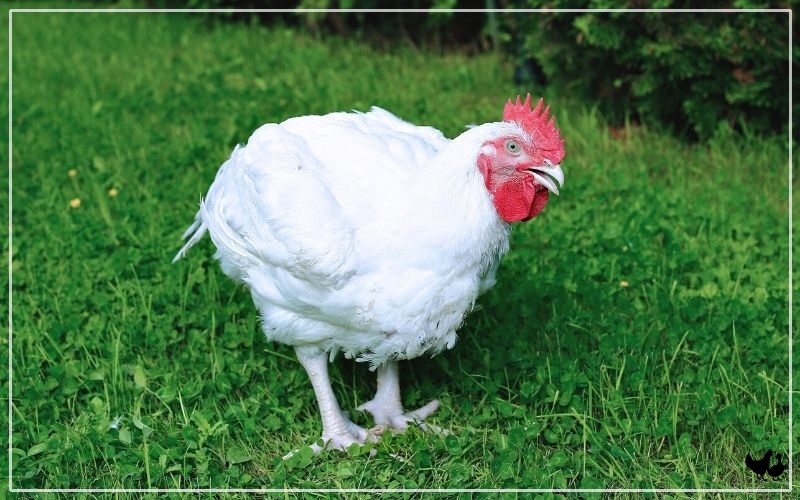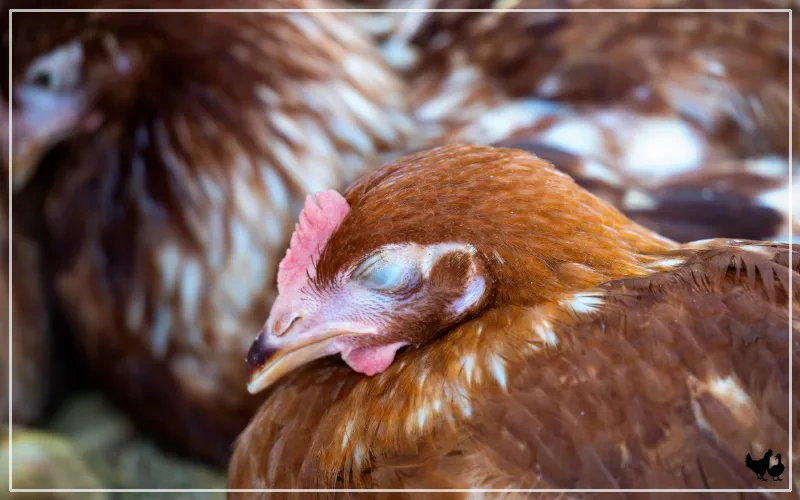Wyandotte vs Orpington – What is the Difference?
Choosing the perfect chicken breed to include in your flock can be confusing. There are hundreds of breeds to choose from! Though making this choice requires you to take time and consider many factors, such as the type of climate you live in. It would help to be aware of the most popular breeds that fellow chicken keepers repeatedly choose, such as Wyandotte and Orpington.

Wyandotte and Orpington are at the top of the list of most compatible breeds for most farmers. When researching breeds of chickens to keep, they may be the first to catch your attention, thanks to their outstanding features. Though these two breeds of chicken are very similar, they have unique features. In this article, we define the two breeds and look at their differences.
What are Wyandotte Chickens?
Accepted by the American Poultry Association (APA) in 1883, Wyandotte is an American breed of chicken developed in the northeastern U.S. in the 1870s. It was initially called the “American Sebrights” before a name change to Wyandotte.
Its name comes from the Native American tribe named Wendat, who lived in Ontario, Canada and New York. The American Poultry Association (APA) accepted the breed in 1883.
No one is sure about the development of Wyandotte because there are no records from the breeders. However, poultry historians propose that numerous different birds may have been used to develop the Wyandotte, including:
- Dark Brahmas
- Silver Sebrights
- Cochins
- Spangled Hamburg
What are Orpington Chickens?
The origin of the Orpington is Great Britain. Its development was in the 1800s during the “Hen fever. William Cook developed Orpington by crossbreeding two chicken breeds- a Minorca and a Black Plymouth Rock.
The offspring from this interbreed was then bred with clean-legged Langshans, which led to Orpington. William Cook’s intended to develop a breed of chicken that produces both eggs and meat.
Wyandotte vs Orpington
Though the characteristics of both Wyandotte and Orpington vary depending on various factors such as environment, various features stand out among them. They include:
– Appearance
The Orpington is large in size. However, its soft feathering masks its actual size. This feathering is very helpful as it allows them to endure cold temperatures better than other breeds. Orpingtons have a deep breast, curved back legs and its thighs are covered by feathers. They have white earlobes and red wattles and most of them are black, Buff, lavender and blue.
On the other hand, Wyandottes have a classic rounded shape. They have a rose-shaped – wide and flat chicken comb covered in tiny bumps. The small comb makes them less susceptible to frostbite in a cold climate.
They have pretty long, shapely legs with no feathering. Originally Wyandotte’s chickens were in one colour- silver but other variations of colours have come up, such as black, blue, gold, Buff, and partridge.
– Size & Weight
The size and weight of both Orpington and Wyandotte highly depend on the feeds they take. However, on average, the Wyandotte male will weigh around 8½ lbs. and the female, 6lbs. There’s also a bantam variety which usually weighs an average of 3lbs to 3¾ lbs.
The Orpingtons roosters usually weigh around 10lb and the hens around 8lb. Bantam varieties can weigh around 3-3½lb.
– Temperament
Orpington chickens are good birds to have as they are calm, gentle, patient and docile. They do enjoy the company of humans and are very tolerant of children. However, this personality exposes them to bullying by more violent breeds.
If you plan to get this breed, they need to share their coop with other similar types of birds, such as Cochins. It is unwise to mix them with breeds such as Rhode Island Reds or other pushy breeds as they get pecked.
Wyandotte chickens are docile and friendly birds making them popular choices for families with children or schools. While they are considered friendly birds, they are known to be at the top of the pecking order in a flock and are rarely bullied.
These easy-going birds do well in a flock of mixed poultry breeds and get along with other animals on a farm.
– Egg Production
On average, Wyandotte chicken lays about 200 eggs each year. They are not affected by cold weather, hence the hens will often lay eggs even during the winter season. The eggs are light, medium, or dark brown.
Orpington lay their first egg at around 6 months. They lay from 200 to 280 brown eggs per year and about 5 eggs per week as a general rule of thumb. During winter, their egg production is low due to less trigger of the photoperiodic hormones.
– Meat Production
The Buff Orpington is one of the most popular chicken breeds for meat. The birds are usually ready for the table after about 22 weeks. Wyandotte chickens are also commonly raised for meat.
This old-fashioned breed is considered a heritage breed in that it takes longer to reach table weight. Unlike Orpington, Wyandotte chickens will be ready for slaughter at around four months of age.
– Care & Housing
Wyandotte chicken is easy to maintain as it only needs life basics -food, shelter, and water. You can raise Wyandotte chickens in both confined and free-range systems. But they will do better and produce quality products if you can raise them in a free-range system.
Ensure a good ventilation system in the coop, so that there is sufficient fresh air and light. And try to make the house in such a way so that you can easily clean it. Feed your birds nutritious commercial or homemade foods so that they can grow better and stay healthy. Also, ensure that they have enough clean and fresh drinking water as per their demand.
Though Orpington can do well in a free-range system, it is advisable to ensure a shelter to protect them from freezing weather, snow, heat, and sunlight. Supply these chickens with plenty of water, and replace it each day to keep it fresh.
You should hang the feeder filled with a high-quality feed so that they can access it as needed. When buying food, ensure that they have no harmful preservatives. Additionally, you can feed your Orpington chicken beans, raw potatoes, and garlic.
Conclusion
There is a lot to consider before deciding whether to keep Orpington or Wyandotte, as they are all unique in their way. If you wonder which to keep among the two, the guide above would be a great place to start. It will give you an insight into both breeds, making your decision-making process easier and shorter.



